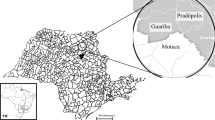Abstract
Agriculture sector is a major contributor to global greenhouse gases (GHGs) emission and thus to anthropogenic climate change. In the proposed system, we used soil attributes, i.e., soil type, soil humidity, soil temperature, Ph value, soil moisture, and climatic attributes, i.e., temperature, humidity, wind speed, pressure, and location to analyze and predict the emission of greenhouse gases CO2 and CH4 from Pune, India. We used different regression techniques and deep learning model to analyze and predict the emission of CO2 and CH4 for different crops and season wise also. The result indicated that the decision tree regressor gives good result, Root Mean Square Error (RMSE) values 0.032930 and 0.026116 for emission of CO2 and CH4 as compared to other algorithm used. The deep learning model works best for 4 layers of sequential neural network. The RMSE values for number of epoch 1000 with different layers are 13.18, 7.87, and 10.36. Thus the effect of soil and climate attributes makes the difference in the greenhouse gas emission from agriculture field.
Access this chapter
Tax calculation will be finalised at checkout
Purchases are for personal use only
Similar content being viewed by others
References
Introduction to the Convention, UNFCCC, Archived from the original on 8 Jan 2014. Accessed 29 June 2018
IPCC: “Principles Governing IPCC Work” (PDF). Approved 1–3 Oct 1998, last amended 14–18 Oct 2013. Accessed 29 June 2018
https://ccafs.cgiar.org/publications/reducing-greenhouse-gasemissions-agriculture-without-compromising-food-security-0#.XEcbKVwzZPY. Accessed 22 Jan 2019 at 8.14 pm
https://unfccc.int/resource/bigpicture/. Accessed on 7 June 2019 at 11.20 pm
Panday, D., Nkongolo, N.V.: Effect of Soil Air and Water on Greenhouse Gases Emissions in a Corn-Soybean Rotation. Department of Agriculture and Environmental Sciences, Lincoln University, Jefferson City, MO 65101-0029, USA
Arrietaa, E.M., Cuchiettia, A., Cabrolb, D., Gonzálezc, A.D.: Greenhouse gas emissions and energy efficiencies for soybeans and maize cultivated in different agronomic zones: a case study of Argentina. Sci. Total Environ. 625, 199–208 (2018)
Khoshnevisan, B., Rafiee, S., Omid, M., Yousefi, M., Movahedi, M.: Modeling of energy consumption and GHG (greenhouse gas) emissions in wheat production in Esfahan province of Iran using artificial neural networks. Energy 52, 333–338 (2013). https://doi.org/10.1016/j.energy.2013.01.028
Hosseinzadeh-Bandbafha, H., Nabavi-Pelesaraei, A., Shamshirband, S.: Investigations of energy consumption and greenhouse gas emissions of fattening farms using artificial intelligence methods. Environ. Prog. Sustain. Energy. American Institute of Chemical Engineers (2017). https://doi.org/10.1002/ep.12604
Hosseinzadeh-Bandbafha, H., Safarzadeh, D., Ahmadi, E.: Modeling output energy and greenhouse gas emissions of dairy farms using neural networks. Biol. Forum Int. J. (2015). https://www.researchgate.net/publication/283571073
Attavanich, W.: The effect of climate change on Thailand’s agriculture. MPRA Paper No. 84005, posted 22 January 2018 06:32 UTC. Online at https://mpra.ub.uni-muenchen.de/84005/
Signor, D., Cerri, C.E.P.: Nitrous oxide emissions in agricultural soils: a review. Pesq. Agropec. Trop. 43(3), 322–338 (2013). e-ISSN 1983-4063. www.agro.ufg.br/pat, jul./set. 2013
Del Grosso, S.J., Parton, W.J.: Quantifying nitrous oxide emissions from agricultural soils and management impacts. In: Understanding Greenhouse Gas Emissions from Agricultural Management ACS Symposium Series. American Chemical Society, Washington, DC (2011)
Sapkota, T.B., Aryal, J.P., Khatri-Chhetri, A., Shirsath, P.B., Arumugam, P., Stirling, C.M.: Identifying high-yield low-emission pathways for the cereal production in South Asia. In: Mitigation and Adaption Strategies Global Change. Springer (2018)
Tongwanea, M., Mdlambuzi, T., Moeletsia, M., Tsuboa, M., Mliswa, V., Grootboom, L.: Greenhouse gas emissions from different crop production and management practices in South Africa. Environ. Dev. 19, 23–35 (2016)
Abdalla, M., Osborne, B., Lanigan, G., Forristal, D., Williams, M., Smith, P., Jones, M.B.: Conservation tillage systems: a review of its consequences for greenhouse gas emissions
Mangalassery, S., Sjögersten, S., Sparkes, D.L., Mooney, S.J.: Examining the potential for climate change mitigation from zero tillage. MS received 27 Sept 2013, revised 2 July 2014. Accepted TBC Aug 2014
Sun, B., Zhao, H., Lu, Y., Lu, F., Wang, X.: The effects of nitrogen fertilizer application on methane and nitrous oxide emission/uptake in Chinese croplands. J. Integr. Agric. 15(2), 440450 (2016)
Millara, N., Urrea, A., Kahmark, K., Shcherbak, I., Philip Robertson, G., Ortiz-Monasterio, I.: Nitrous oxide (N2O) flux responds exponentially to nitrogen fertilizer in irrigated wheat in the Yaqui Valley, Mexico. Agric. Ecosyst. Environ. 261:125–132 (2018). (https://doi.org/10.1016/j.agee.2018.04.003, 0167-8809/ © 2018 The Authors. Published by Elsevier B.V.)
Zebarth, B.J., Rochette, P., Burton, D.L., Price, M.: Effect of fertilizer nitrogen management on N2O emissions in commercial corn fields. Can. J. Soil Sci. 189–195
Author information
Authors and Affiliations
Corresponding author
Editor information
Editors and Affiliations
Rights and permissions
Copyright information
© 2021 The Editor(s) (if applicable) and The Author(s), under exclusive license to Springer Nature Singapore Pte Ltd.
About this paper
Cite this paper
Kosamkar, P.K., Kulkarni, V.Y. (2021). Effect of Soil and Climatic Attribute on Greenhouse Gas Emission from Agriculture Sector. In: Bhateja, V., Peng, SL., Satapathy, S.C., Zhang, YD. (eds) Evolution in Computational Intelligence. Advances in Intelligent Systems and Computing, vol 1176. Springer, Singapore. https://doi.org/10.1007/978-981-15-5788-0_9
Download citation
DOI: https://doi.org/10.1007/978-981-15-5788-0_9
Published:
Publisher Name: Springer, Singapore
Print ISBN: 978-981-15-5787-3
Online ISBN: 978-981-15-5788-0
eBook Packages: Intelligent Technologies and RoboticsIntelligent Technologies and Robotics (R0)




